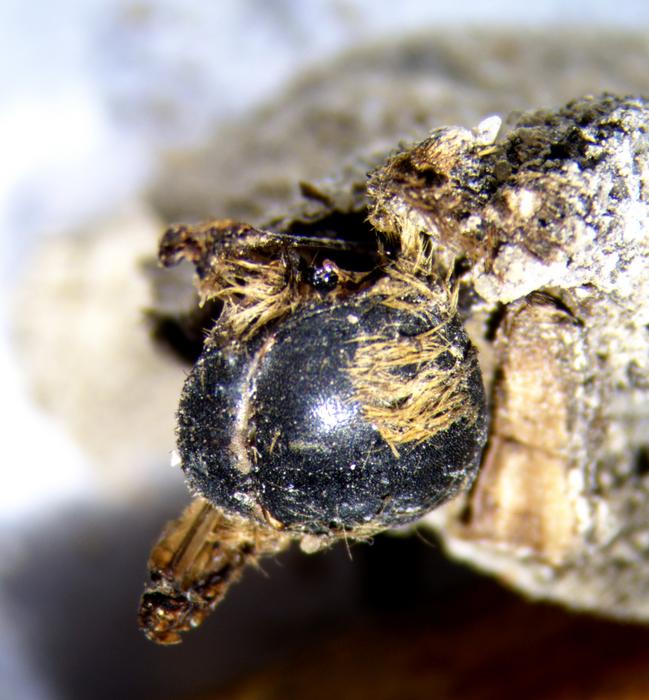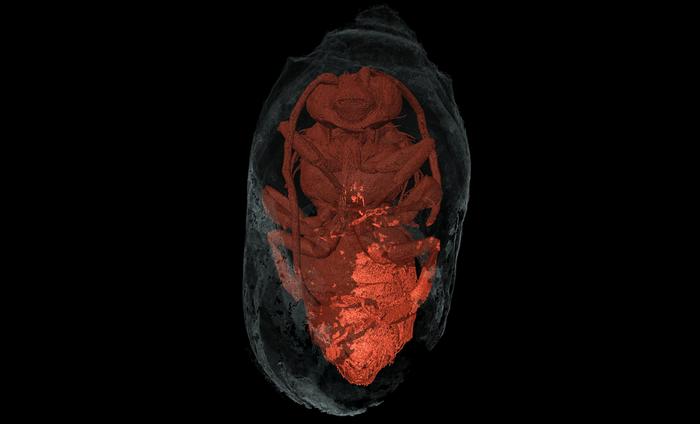Hundreds of bees, mummified inside their cocoons for almost 3,000 years, have been discovered on the southwest coast of Portugal. In a cruel twist of fate, these pitiful pollinators were sealed and impeccably preserved inside their sheaths without ever having seen the light of day.
The bees, which belong to the genus Eucera and were stumbled upon in 2019 on the coast of Odemira, hail from a time when Pharaohs ruled Egypt, and predate the founding of Rome by a couple of hundred years. Meanwhile, Portugal, where the insects were found, was approaching the end of its Bronze Age. And yet, despite their great age, the bees are in remarkably good condition.
“The degree of preservation of these bees is so exceptional that we were able to identify not only the anatomical details that determine the type of bee, but also its sex and even the supply of monofloral pollen left by the mother when she built the cocoon,” study author Carlos Neto de Carvalho said in a statement.

The dorsum of a fossilized bee.
Image credit: Andrea Baucon
Such preservation is rare for insect fossils, but particularly for bees. Normally, their exoskeletons, which are made of chitin, rapidly decompose after death, meaning that while their nests and hives often appear in the fossil record, they themselves almost never do.
Using a technique called X-ray microcomputed tomography, the research team was able to peer inside the bees’ cocoons without destroying them, revealing a complex composition that may explain their decay-defying preservation.
Each cocoon was lined with a waterproof, organic polymer thread produced by the mother bee, which provided protection from the elements and therefore from decomposition.

X-ray micro-computed tomography views of a male Eucera bee (ventral) inside a sealed cocoon.
Image credit: Federico Bernardini/ICTP
Eucera comprises more than 100 species of bee. The females build their nests underground, laying eggs within them and providing pollen and nectar to sustain their young. The adult bees only emerge from their cocoons for a few weeks – unless something happens before they get the chance, trapping them in their cocoon-cum-coffin for eternity.
As for what this catastrophic event could have been, the researchers still aren’t sure, but they suggest it could have something to do with changes in the weather.
“A sharp decrease in the nocturnal temperature at the end of winter or a prolonged flooding of the area already outside the rainy season could have led to the death, by cold or asphyxiation, and mummification of hundreds of these small bees”, explained Neto de Carvalho.
Whatever it was, it was “an unlucky night for hundreds of adult bees that were ready to leave their cocoons,” Neto de Carvalho told The New York Times.
As we face an increasingly changeable climate, understanding the reasons behind historical mass mortalities such as this could be crucial to protecting bee populations today.
“We expect this discovery will bring us more information about how these animals became resilient to climate change,” Neto de Carvalho told the Times. “The Eucera bee mummies can be considered, therefore, a message of hope in this world of climatic chaos we are living presently.”
The study is published in Papers in Palaeontology.
Source Link: These Ill-Fated Bees Were Mummified Inside Their Cocoons 3,000 Years Ago